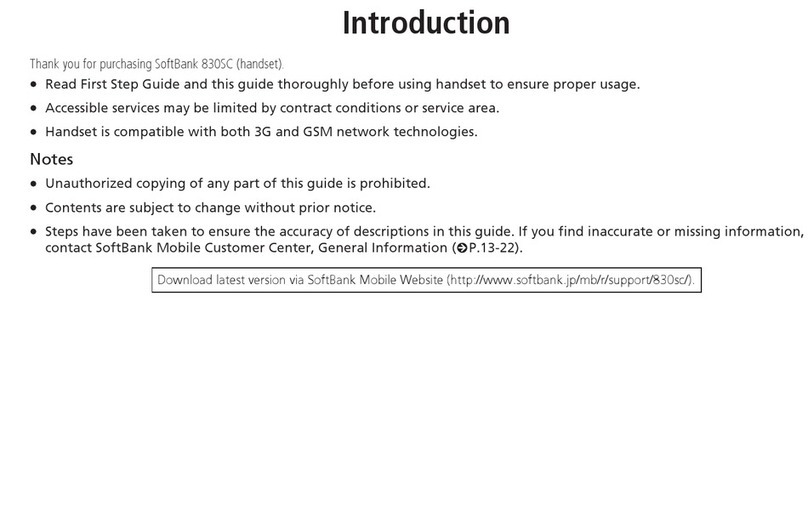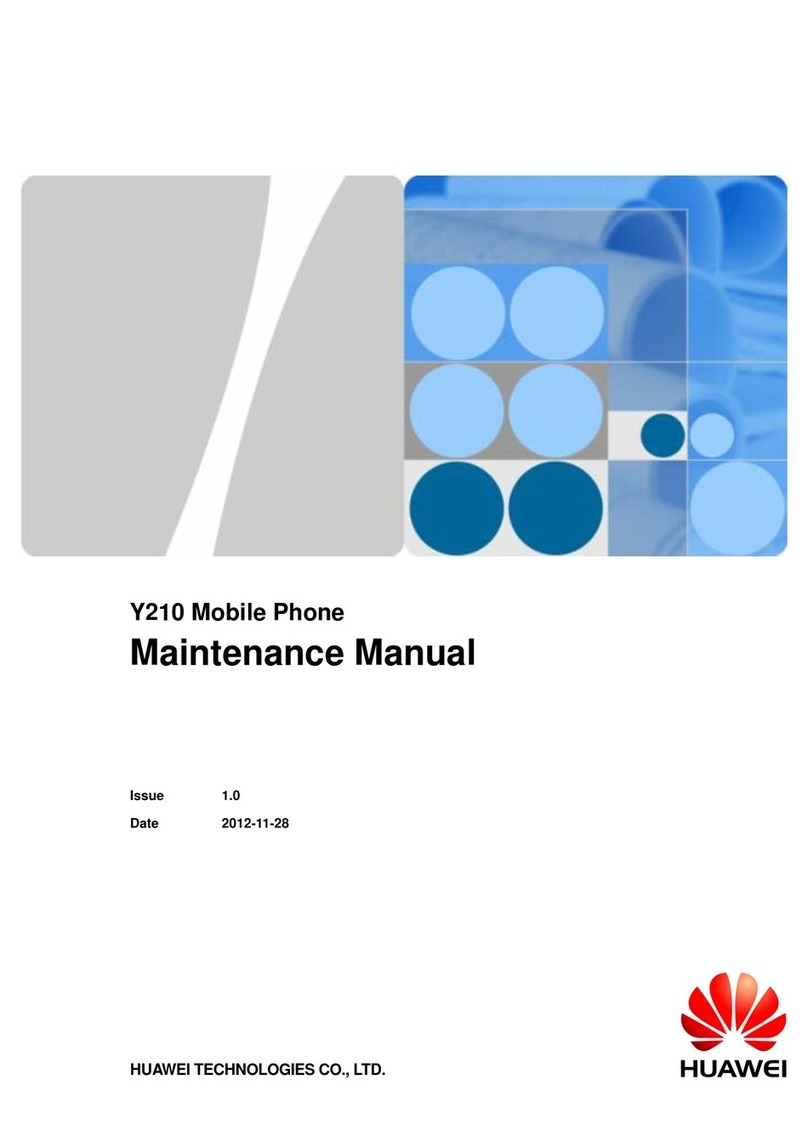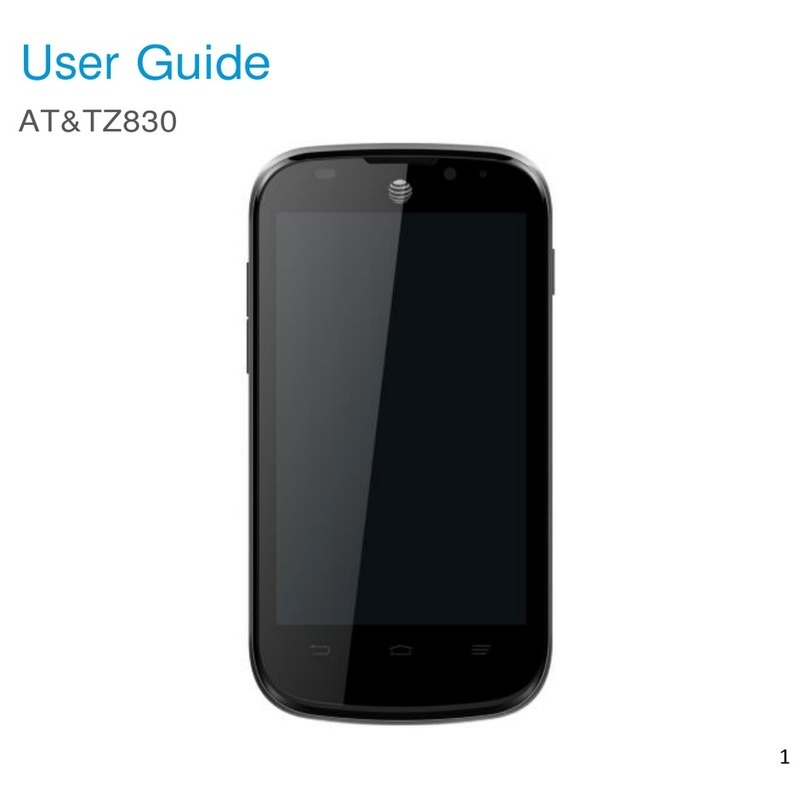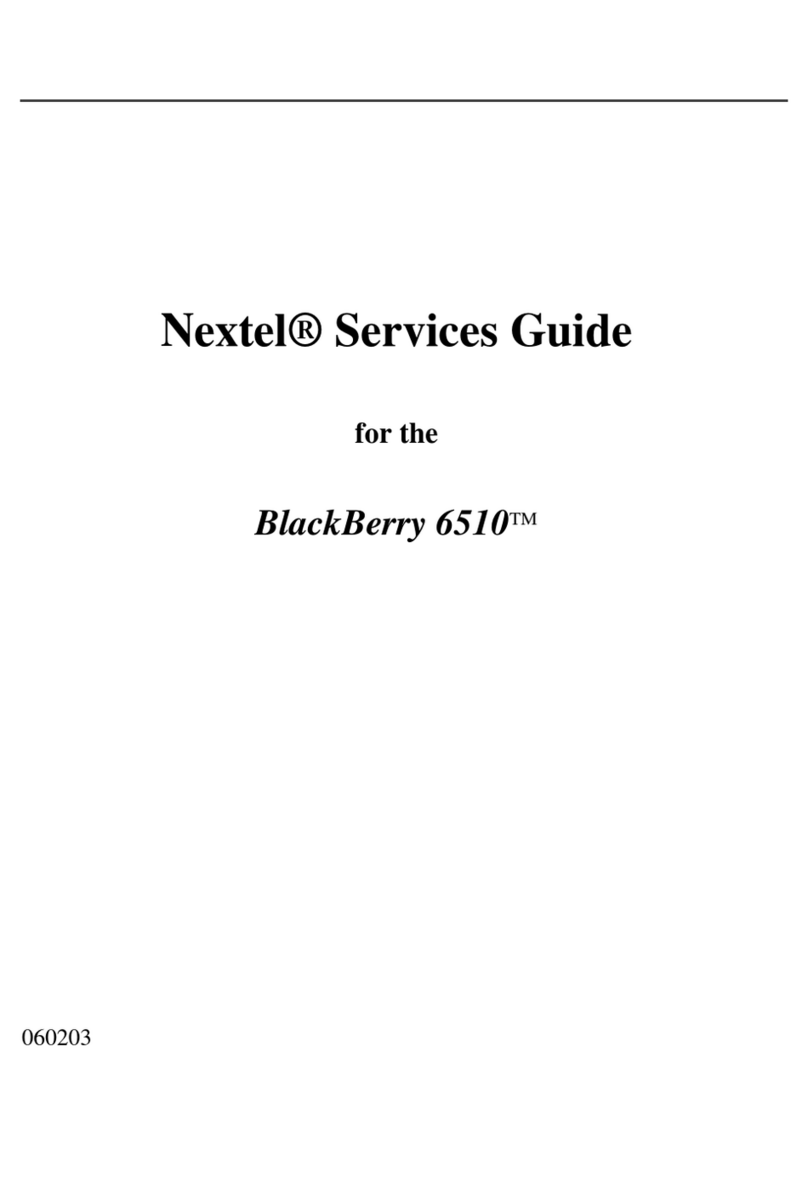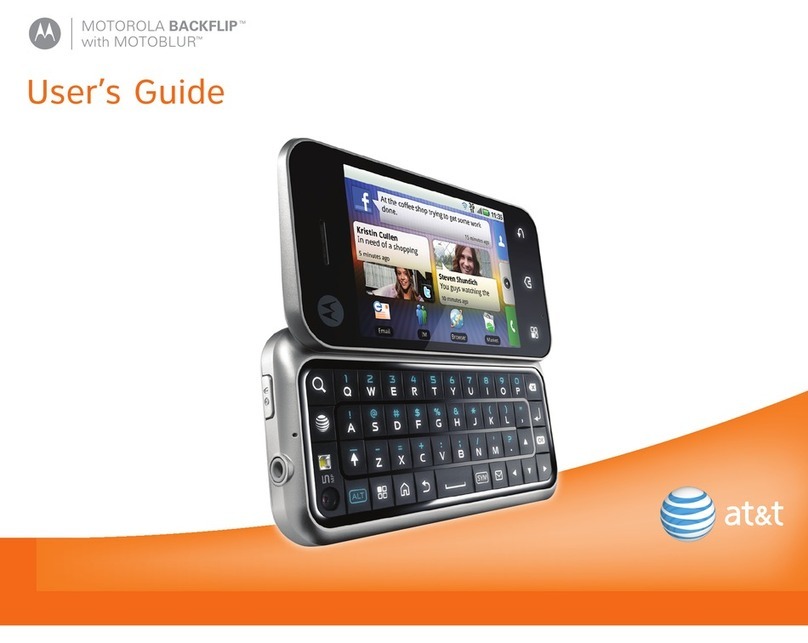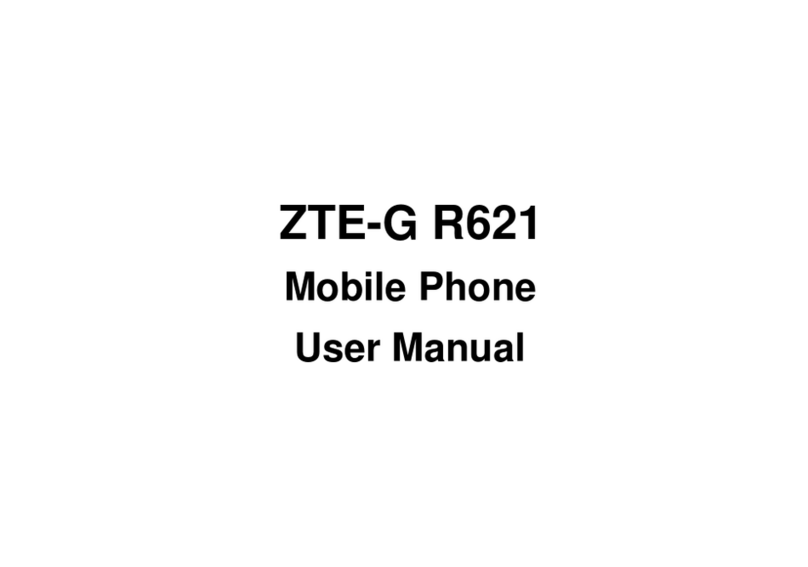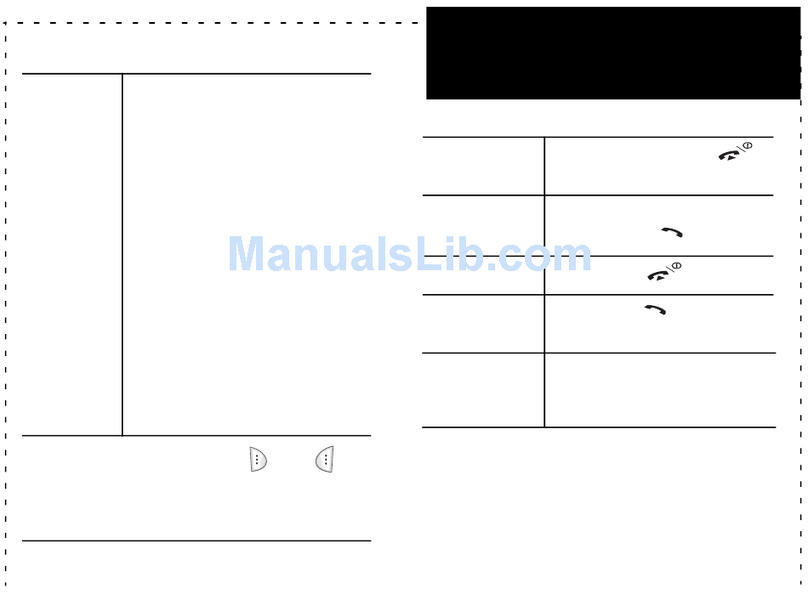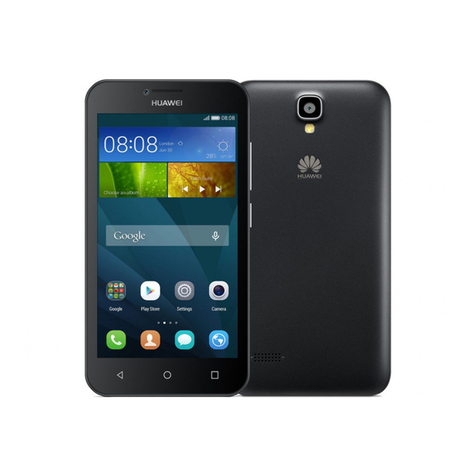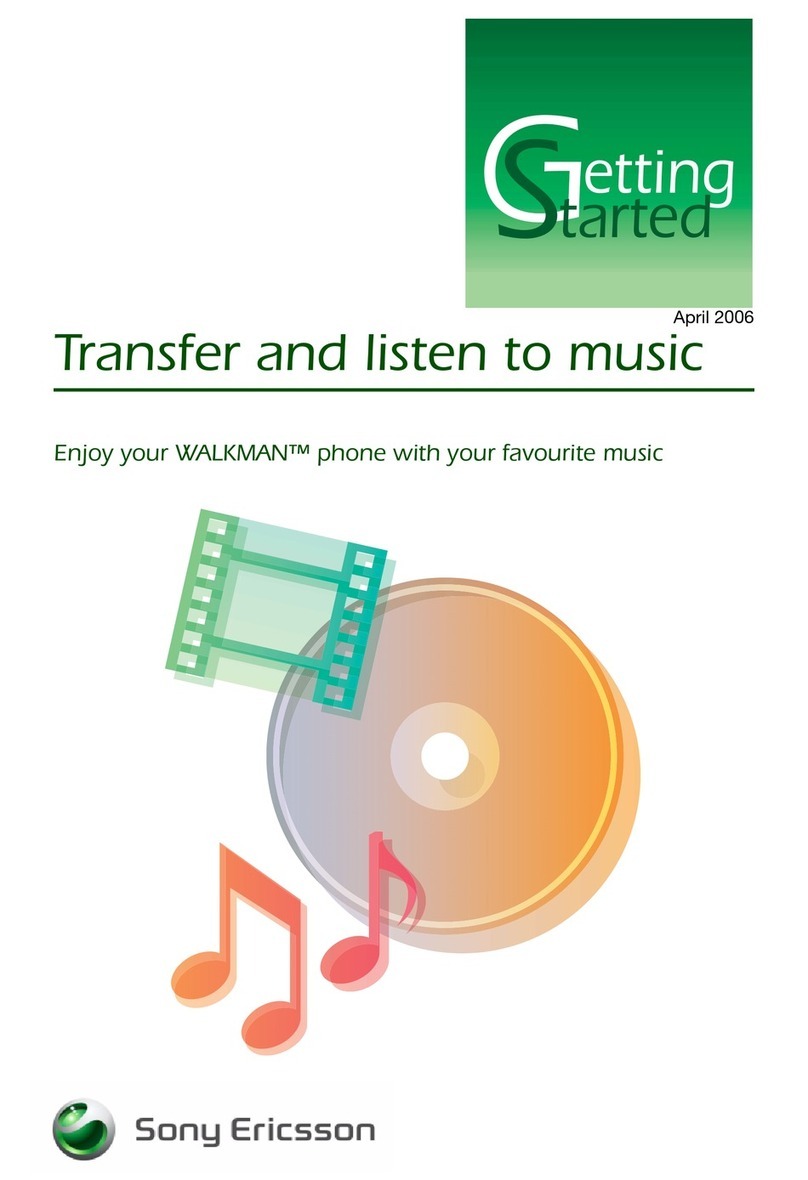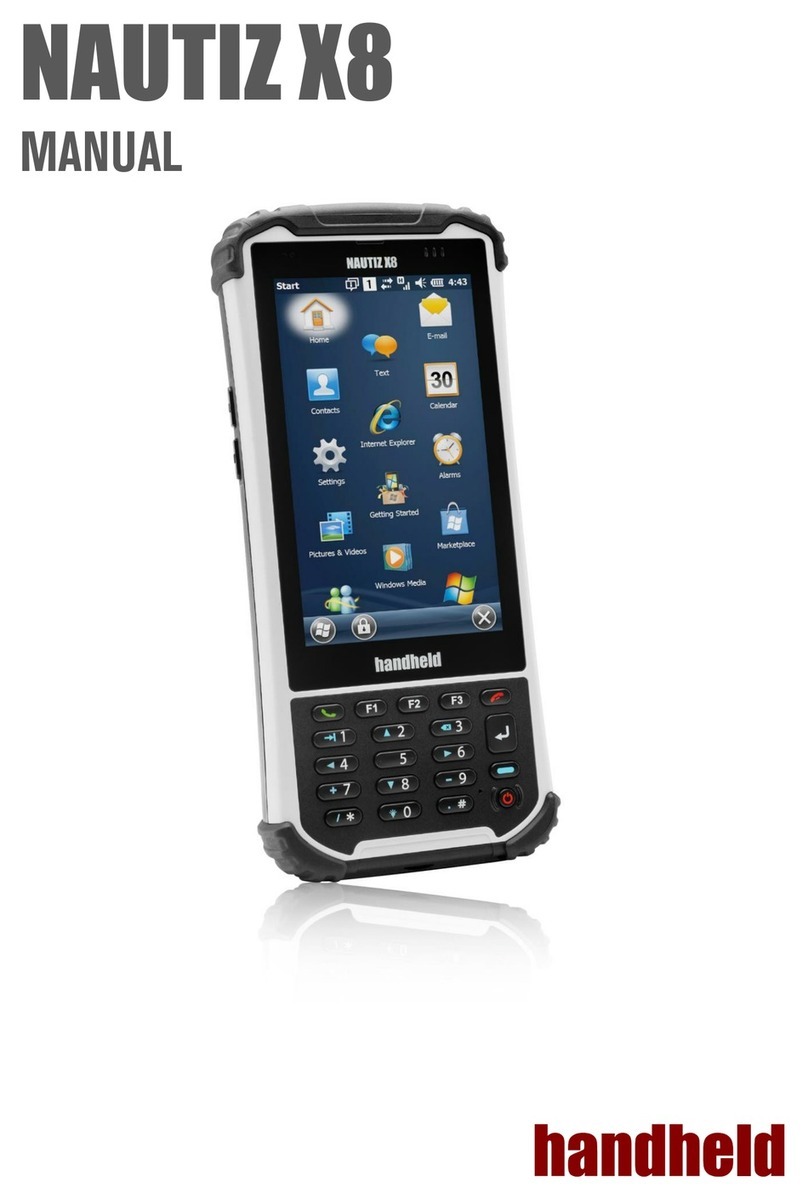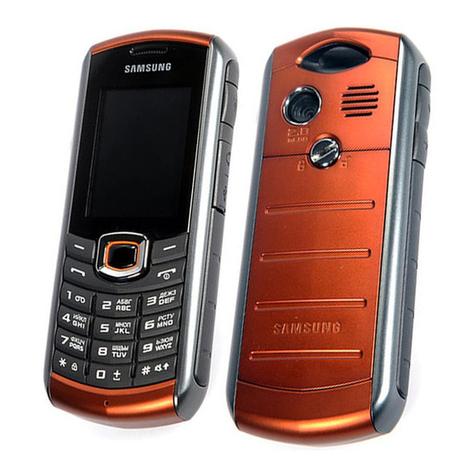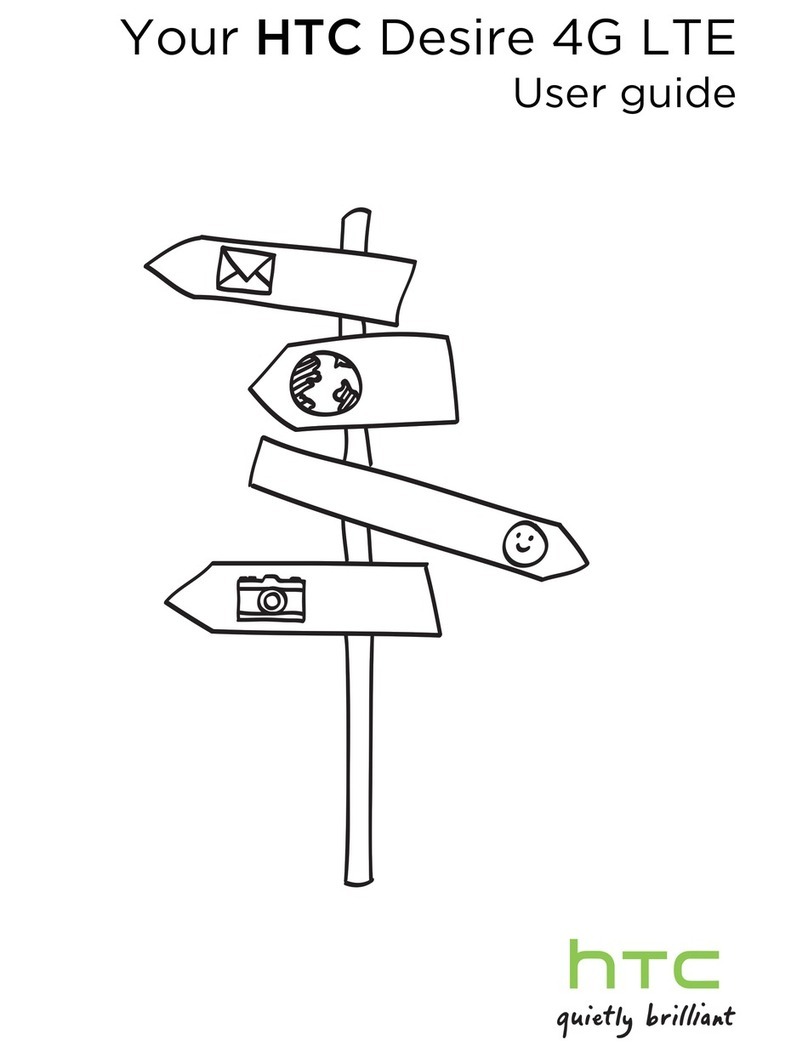SoftBank X02T User manual

X02T取扱説明書和文
DIC G-268
PANTONE 8400 C
X02T
携帯電話・PHS 事業者は、環境を保護し貴重な資源を再利用するために、お客様が不要となってお持ちになる
電話機・電池・充電器をブランド・メーカーを問わず左記のマークのあるお店で回収し、リサイクルを行っています。
※回収した電話機・電池・充電器はリサイクルするためご返却できません。
※プライバシー保護の為、電 話 機 に記 憶 されて いる お客 様 の 情 報( アドレス 帳・通 信 履 歴・メール等)は事前に消去願います。
X02T
X02T

Declaration of conformity
We, Toshiba Information Systems UK (Ltd), Mobile Communications Division, of
Toshiba Court, Weybridge Business Park, Addlestone Road, Weybridge, KT15 2UL declare under our
sole responsibility that this product (X02T, Type (Model) Name TP5-J01) is in conformity with the following
standards and/or other normative documents:
EN 301 511, EN 301 908-1, EN 301 908-2, EN 60950-1, EN 300 328, EN 300 440, EN 50360, EN 62209-1,
EN 301 489-1, EN 301 489-3, EN 301 489-7, EN 301 489-17, and EN 301 489-24
We hereby declare that all essential radio test suites, EMC & safety requirements have been carried out and that
the above named product is in conformity to all the essential requirements of Directive 1999/5/EC.
The conformity assessment procedure referred to in Article 10(5) and detailed in Annex IV of Directive 1999/5/
EC has been followed with the involvement of the following Notified Body(ies):
Cetecom GmbH, Im Teelbruch 116, 45219 Essen, Germany
(day) (month) 2009
Hidehito Koka
Deputy Managing Director of TIU
General Manager Mobile Communications Division
2

Health and safety
7
Health and safety
Health and safe ty
General
• Do not attempt to dismantle the phone or any
of its accessories. Only qualified service
personnel should repair the phone and its
accessories.
• Do not touch the phone, battery or AC
charger with wet hands.
• Keep your Toshiba phone, and all parts and
accessories, out of the reach of small children
and pets. The SIM card and other small parts
could present a choking hazard.
• Use only Toshiba approved batteries and
accessories.
• The bundled battery and AC charger are only
for use with your Toshiba phone. Do not use
this battery or AC charger with any other
device.
• Use of third party equipment (including
batteries, cables and accessories) not
manufactured or authorised by Toshiba may
invalidate the warranty of your phone and
adversely affect the operation of the phone.
• Before connecting your Toshiba phone to
another device, read the supporting
documentation to confirm that the other
device is compatible.
• When using the headset, be careful not to
listen at excessive volumes. Listening to loud
sound levels may lead to hearing loss.
• It is recommended that pregnant and young
women take precautions while in a call and
keep the phone at a distance from their lower
abdomen. For this situation, use of a hands-
free kit is recommended.
• Your phone contains metal that may cause
skin irritation.
3

Health and safety
8
Health and safety
Operating environment
• Observe all local safety regulations regarding
the use of mobile phones while driving.
• Pull off the road and park before making or
answering a call.
• Do not stop on the hard shoulder of a
motorway to answer or make a call, except in
an emergency.
• If using an integrated hands-free device,
make sure the phone is securely placed in its
holder.
• Only qualified personnel should install the
device in a vehicle. Faulty installation or
service may be dangerous and may
invalidate any warranty. For more
information, consult your vehicle
manufacturer or representative.
• Do not place objects, including either
installed or portable wireless equipment, in
the area over the airbag or in the airbag
deployment area.
• Switch off your Toshiba phone when
refuelling.
• Do not handle your Toshiba phone when
operating machinery.
• Switch your Toshiba phone off if you are
entering a hospital or health care facility.
Medical equipment may be affected by phone
usage.
• Switch your Toshiba phone off when
travelling on an aircraft. The phone signal
may interfere with systems in the aircraft. You
are legally bound to comply with this
recommendation.
• Switch your Toshiba phone off in any facility
where posted notices prohibit phone usage.
Always follow building regulations governing
phone usage.
• Switch your Toshiba phone off when blasting
is in progress, and observe all provided
guidelines and regulations.
• Switch your Toshiba phone off in areas with
potentially explosive atmospheres, such as
fuel storage areas and spray paint facilities.
• Switch your Toshiba phone off when
outdoors during an electrical storm.
4

Health and safety
9
Health and safety
• Keep your Toshiba phone away from fuel and
chemicals.
Electronic devices
• If you wear a pacemaker, or are in the
company of someone who does, you should
be aware that there is a small risk of mobile
phone usage interfering with the operation of
the pacemaker. You should contact your
doctor, or the manufacturer of the
pacemaker, for more information. If you have
any reason to suspect that interference is
taking place, switch off your phone
immediately.
• Mobile phone usage may interfere with some
hearing aids. If this happens, you should
contact your service provider or doctor for
further information.
• Mobile phone usage may interfere with the
functionality of inadequately shielded
medical devices. Consult a physician or the
manufacturer of the device to ensure safe
procedures are used.
• Mobile phone usage may interfere with the
functionality of any inadequately shielded
electronic system in a motor vehicle.
Examples include airbags and fuel injection
systems. You should contact the
manufacturer of the vehicle or system to
ensure that the system is properly shielded.
5

Health and safety
10
Health and safety
Battery safety
• Only use batteries approved by Toshiba for
use in this handset. There is a risk of
explosion if the battery is replaced with an
incorrect type.
• Only recharge the battery with the
recommended charger supplied by Toshiba.
• Stop using the battery if you detect any
abnormalities, such as odour, discolouration
or heat during use, charging or storage.
• Do not use your Toshiba phone with a
damaged battery.
• Do not short-circuit the battery. Accidental
short-circuiting can occur when a metallic
object causes a direct connection between
the + and - terminals of the battery.
• Do not touch the battery terminals.
• Do not leave the battery in areas of extreme
cold or heat.
• Never soak the battery in water or any other
liquid.
• Never attempt to open the battery. The
battery contains substances that may be
harmful if swallowed or allowed to come into
contact with unprotected skin.
• In the unlikely event of a battery leak, take
care to keep the battery discharge away from
your eyes and skin. If the leakage does come
into contact with eyes or skin, flush
thoroughly with clean water and consult a
doctor.
• Do not dispose of the battery in a fire.
• Do not dispose of the battery in a regular
waste container. The battery contains toxic
chemicals and must be disposed of
appropriately. Contact your local authorities
for more information.
6

Health and safety
11
Health and safety
AC charger safety
• Do not use a damaged or worn AC charger.
The use of a damaged or worn AC charger
could result in electric shock, burns or fire.
Contact an authorised Toshiba service
provider immediately to obtain a suitable
replacement.
• Do not bend or twist the cable of the AC
charger.
• Do not pull on the cable of the AC charger in
order to remove the plug from a socket. Grasp
the plug directly when unplugging the AC
charger to avoid causing any damage to the
cable.
• Do not touch the pins of the plug when
connecting or disconnecting it from a power
source.
• Do not place heavy objects on the AC
charger.
• When the AC charger is not in use,
disconnect it from the power source.
Emergency calls
When making emergency calls from your
Toshiba phone, ensure that the phone is
switched on and in service.
Calls cannot be made to emergency services
while data communication is being performed
within a GSM area. Also, calls may not be able
to be made to emergency services depending
on the network services of some service
providers.
There is no guarantee that a connection can be
established in all countries and areas because
operation of your phone differs depending on
the wireless network, wireless signal and your
setting status. Do not rely solely on your mobile
phone when you need to make emergency
calls.
IMPORTANT: You can make calls to
emergency services when the SIM card is
not inserted (if supported by the network),
the SIM card is locked, the phone is
locked, Call Barring is set, or Fixed
Dialing is set.
7

Health and safety
12
Health and safety
FCC notice
This device complies with Part 15 of the FCC
rules. Operation is subject to the following two
conditions: (1) This device may not cause
harmful interference, and (2) This device must
accept any interference received, including
interference that may cause undesired
operation.
Changes or modifications not expressly
approved by the party responsible for
compliance could void the user’s authority to
operate the equipment.
Information to user
This equipment has been tested and found to
comply with the limits of a Class B digital device,
pursuant to Part 15 of the FCC Rules. These
limits are designed to provide reasonable
protection against harmful interference in a
residential installation. This equipment
generates, uses and can radiate radio
frequency energy and, if not installed and used
in accordance with the instructions, may cause
harmful interference to radio communications.
However, there is no guarantee that
interference will not occur in a particular
installation; if this equipment does cause
harmful interference to radio or television
reception, which can be determined by turning
the equipment off and on, the user is
encouraged to try to correct the interference by
one or more of the following measures:
1. Reorient/relocate the receiving aerial.
2. Increase the separation between the
equipment and receiver.
8

Health and safety
13
Health and safety
3. Connect the equipment into an outlet on a
circuit different from the outlet the receiver is
currently connected.
4. Consult the dealer or an experienced radio/
TV technician for help.
FCC RF exposure
information
Your Toshiba phone is a radio transmitter and
receiver. It is designed and manufactured not to
exceed the emission limits for exposure to radio
frequency (RF) energy set by the Federal
Communications Commission of the U.S.
Government.
The guidelines are based on standards that
were developed by independent scientific
organisations through periodic and thorough
evaluation of scientific studies. The standards
include a substantial safety margin designed to
assure the safety of all persons, regardless of
age and health.
The exposure standard for wireless handsets
employs a unit of measurement known as the
Specific Absorption Rate, or SAR. The SAR limit
set by the FCC is 1.6 W/kg. The tests are
performed in positions and locations (e.g., at the
ear and worn on the body) as required by the
FCC for each model. The SAR value for this
model handset when tested for use at the ear is
WARNING: Changes or modifications not
expressly approved by the manufacturer
responsible for compliance could void the
user’s authority to operate the equipment.
!
9

on FCC ID WVS-TP5-J01 .
Additional information on Specific Absorption
Rates (SAR) can be found on the Cellular
Telecommunications & Internet Association
(CTIA) website at http://www.phonefacts.net.
H
ea
lth
an
d
sa
f
e
t
yy
0.590 W/kg and when worn on the body, as0.590 W/kg and when worn on the body, as
described in this user guide, is 0.885 W/kg.described in this user guide, is 0.885 W/kg.
Body-worn operationBody-worn operation
This phone was tested for typical body-wornThis phone was tested for typical body-worn
operations with the back of the phone kept at aoperations with the back of the phone kept at a
distance of 1.5 cm from the body. To maintaindistance of 1.5 cm from the body. To maintain
compliance with FCC RF exposurecompliance with FCC RF exposure
requirements, use accessories that maintain arequirements, use accessories that maintain a
1.5cm separation distance between your body1.5cm separation distance between your body
and the back of the phone. The use of belt clips,and the back of the phone. The use of belt clips,
holsters and similar accessories should notholsters and similar accessories should not
contain metallic components. The use ofcontain metallic components. The use of
accessories that do not satisfy theseaccessories that do not satisfy these
requirements may not comply with FCC RFrequirements may not comply with FCC RF
exposure requirements, and should be avoided.exposure requirements, and should be avoided.
The FCC has granted an EquipmentThe FCC has granted an Equipment
Authorization for this model handset with allAuthorization for this model handset with all
reported SAR levels evaluated as in compliancereported SAR levels evaluated as in compliance
with the FCC RF emission guidelines. SARwith the FCC RF emission guidelines. SAR
information on this model handset is on file withinformation on this model handset is on file with
the FCC and can be found under the Displaythe FCC and can be found under the Display
Grant section of https://fjallfoss.fcc.gov/oetcf/Grant section of https://fjallfoss.fcc.gov/oetcf/
eas/reports/GenericSearch.cfm after searchingeas/reports/GenericSearch.cfm after searching
10

Health and safety
15
Health and safety
European RF Exposure
Information
Your Toshiba phone is a radio transmitter and
receiver. It is designed not to exceed the limits
for exposure to radio waves recommended by
international guidelines. These guidelines were
developed by the independent scientific
organisation ICNIRP and include safety margins
designed to assure the protection of all persons,
regardless of age and health.
The guidelines use a unit of measurement
known as the Specific Absorption Rate, or SAR.
The SAR limit for mobile devices is 2 W/kg and
the SAR value for this device when tested at the
ear was 0.491 W/kg*. As mobile devices offer a
range of functions, they can be used in other
positions, such as on the body as described in
this user guide**. In this case, the tested SAR
value is 0.372 W/kg.
As SAR is measured utilising the device’s
highest transmitting power, the actual SAR of
this device while operating is typically below that
indicated above. This is due to automatic
changes to the power level of the device to
ensure it only uses the minimum level required
to reach the network.
The World Health Organization has stated that
present scientific information does not indicate
the need for any special precautions for the use
of mobile devices. They state that if you want to
reduce your exposure then you can do so by
limiting the length of calls or using a ‘hands-free’
device to keep the mobile phone away from the
head and body. Additional Information can be
found on the website of the World Health
Organization (http://www.who.int/emf).
* The tests are carried out in accordance with
international guidelines for testing.
** Please see FCC RF exposure information
for further information about body worn
operations.
11
0.357

Health and safety
16
Health and safety
Disposal
The following information is only valid for EU-
member states.
Disposal of products
The crossed out wheeled dust bin symbol
indicates that products must be collected and
disposed of separately from household waste.
Integrated batteries and accumulators can be
disposed of with the product. They will be
separated at the recycling centres.
The black bar indicates that the product was
placed on the market after August 13, 2005.
By participating in separate collection of
products and batteries, you will help to assure
the proper disposal of products and thus help to
prevent potential negative consequences for
the environment and human health.
For more detailed information about the
collection and recycling programmes available
in your country, please contact your local city
office or the shop where you purchased the
product.
Disposal of batteries and/or
accumulators
The crossed out wheeled dust bin symbol
indicates that batteries and/or accumulators
must be collected and disposed of separately
from household waste.
12

Health and safety
17
Health and safety
If the battery or accumulator contains more than
the specified values of lead (Pb), mercury (Hg),
and/or cadmium (Cd) defined in the Battery
Directive (2006/66/EC), then the chemical
symbols for lead (Pb), mercury (Hg) and/or
cadmium (Cd) will appear below the crossed out
wheeled dust bin symbol.
By participating in separate collection of
batteries, you will help to assure the proper
disposal of products and batteries and thus help
to prevent potential negative consequences for
the environment and human health.
For more detailed information about the
collection and recycling programmes available
in your country, please contact your local city
office or the shop where you purchased the
product.
13

Care and maintenance
18
Care and maintenance
Care and maintenance
General
You can greatly enhance the lifespan of your
Toshiba phone, and the parts and accessories,
by following the suggestions below.
• Always use your Toshiba phone in the
intended manner. Incorrect usage may affect
performance.
• To avoid permanent damage to your Toshiba
phone, use only Toshiba approved batteries
and accessories.
• The bundled battery and AC charger are only
for use with your Toshiba phone. Do not use
this battery or AC charger with any other
device. This could cause permanent damage
to the device, battery or charger.
• Use of third party equipment (including
batteries, cables and accessories) not
manufactured or authorised by Toshiba may
invalidate the warranty of your phone and
adversely affect the operation of the phone.
• Before connecting your Toshiba phone to
another device, read the supporting
documentation to confirm that the other
device is compatible.
• Keep your Toshiba phone, and all parts and
accessories, out of the reach of small children
and pets.
• Do not allow your Toshiba phone, battery or
accessories to come into contact with liquids
or moisture. Moisture of any kind can corrode
the electronic circuits. The manufacturer's
warranty may become invalid if the phone or
battery get wet due to misuse.
• Do not use or store your Toshiba phone in
dusty or dirty locations.
• Do not use or store your Toshiba phone in hot
areas. High temperatures will shorten the
lifespan of the phone, damage the battery,
and warp/melt internal circuits.
TIP: Maintaining your Toshiba phone, and
the parts and accessories, in a good
condition will help you fulfil the warranty
obligations.
14

Care and maintenance
19
Care and maintenance
• Do not store your Toshiba phone in, or near,
direct heat sources such as radiators. This
could cause the battery to overheat and
explode.
• Do not store your Toshiba phone in cold
areas. A big difference between room
temperature and the temperature in the
phone can cause condensation to form inside
the phone, damaging the electronic circuits.
• Do not place your Toshiba phone alongside
computer disks, credit cards, travel cards and
other magnetic media. Information contained
on disks or cards may be affected by the
phone.
• Do not expose your Toshiba phone to strong
magnetic fields. This may cause temporary
malfunction.
• Do not open your Toshiba phone unless
absolutely necessary.
• Do not mishandle or abuse your Toshiba
phone. Dropping the phone, or knocking or
shaking it, can damage the internal circuits.
• Do not apply paint or other such substances
to your Toshiba phone.
• Interference may affect the performance of
your Toshiba phone. This is normal and the
phone should operate as normal once you
move away from the source of the
interference.
• If your Toshiba phone, or any of the
accessories, are not working as they should,
please consult your dealer. They can provide
you with the expert assistance you require.
• Do not attempt to disassemble your Toshiba
phone. Only Toshiba authorised personnel
should service the phone.
• When your Toshiba phone is set to vibrate,
the vibration may cause the phone to move.
Take care not to place the phone near a heat
source or the edge of a high surface.
• Only use a soft, clean cloth to clean your
Toshiba phone. Do not use chemicals,
detergents, abrasive substances, or any
liquids. Use a cotton swab to clean the
camera lens.
15

Care and maintenance
20
Care and maintenance
• Do not use water to clean the touch screen.
• Keep the touch screen and tip of the stylus
clean to avoid permanent damage.
• Keep sharp objects away from the touch
screen to avoid it being scratched and
damaged.
• For touch screen input, use only the included
stylus or your finger. Use of other objects can
damage the input panel and will void the
warranty.
• If the tip of the stylus is damaged, do not use
it. If you operate the touch screen with a
damaged stylus, the touch screen may be
damaged. When the stylus is damaged,
please purchase a new one.
• Do not tap hard on the touch screen, as this
may cause permanent damage to the screen.
• To avoid scratches on the touch screen,
avoid placing your Toshiba phone with the
touch screen facing downwards.
• It is recommended that you use the bundled
stylus when pressing the Reset button.
Battery care and
maintenance
Your Toshiba phone is powered by a
rechargeable Lithium ion (Li-ion) battery.
The full performance of a new battery is
achieved only after two or three complete
charge and discharge cycles.
The battery can be charged and discharged
hundreds of times, but it will eventually wear out.
When the talk and standby times are noticeably
shorter than normal, it is recommended that you
buy a new battery.
• A new battery, or one that has not been used
for a long time, could have reduced capacity
during initial use.
• Do not leave the battery connected to the
charger and power source for longer than
necessary. This will result in repeated short
charging, which will reduce battery
performance and lifespan. Please disconnect
the AC charger when the battery is full.
16

Care and maintenance
21
Care and maintenance
• Do not leave the battery in areas of extreme
cold or heat. This could affect the
performance of the battery.
• The battery has optimum performance in an
ambient temperature of between +5 °C
(+41 °F) and +35 °C (+95 °F).
• Only remove the battery with the phone
switched off.
• Do not leave the battery empty or
disconnected for a long time, as this may
cause data to be reset.
• If you are not going to use your phone for a
long time, fully charge the battery, then switch
off the phone. The phone should be stored in
a dry place away from direct sunlight.
Recharge the phone approximately every six
months.
• Avoid repeated short charging. It is preferable
to let the battery go flat and then recharge it
completely.
Restarting your Toshiba
phone
If you have any problems, such as the phone
freezing, restart the phone.
To restart your Toshiba phone:
1. Press and hold the Power key.
2. Tap Power Off to confirm powering off the
phone.
3. Wait a few seconds, then press and hold the
Power key for approximately two seconds
to switch the phone on.
IMPORTANT: If you restart your Toshiba
phone, data that you have not saved will
be lost.
17

Care and maintenance
22
Care and maintenance
Resetting your Toshiba
phone
If you still have problems after restarting your
phone, you can reset the phone.
Resetting your Toshiba phone causes it to
restart and adjusts memory allocation. Your
phone will return to the same status as the last
time you used it, though unsaved data may be
lost.
To reset your Toshiba phone:
Using the stylus, press and hold the Reset
button. The phone will switch on after resetting.
If, after you have reset your Toshiba phone,
there is still a problem:
1. Remove the battery (see Getting started
for instructions).
2. Re-insert the battery, then switch on the
phone (see Getting started for
instructions).
Reinitialising your Toshiba
phone
For details of reinitialising your Toshiba phone,
see Master Clear in Settings.
We recommend that you back up all of your data
before reinitialising your Toshiba phone.
IMPORTANT: If you reset your Toshiba
phone, data that you have not saved may
be lost.
TIP: You can also reset your Toshiba
phone by pressing the Power key for
approximately 15 seconds.
IMPORTANT: It is recommended that you
frequently back up the data on your
Toshiba phone.
18

ご利用になる前に
1
代表的な機能・・・・・・・・・・・・・・・・・・・・・・・・・・・・・・・・・・・・・・・・・・・・・・・・・・・・・・・・・・・・・・・・ 1-X
USIMカードのお取り扱い ・・・・・・・・・・・・・・・・・・・・・・・・・・・・・・・・・・・・・・・・・・・・・・・・・・・・ 1-X
USIMカードをご利用になる前に・・・・・・・・・・・・・・・・・・・・・・・・・・・・・・・・・・・・・・・・・・・・・ 1-X
USIMカードを取り付ける/取り外す・・・・・・・・・・・・・・・・・・・・・・・・・・・・・・・・・・・・・・・・・ 1-X
PINコード ・・・・・・・・・・・・・・・・・・・・・・・・・・・・・・・・・・・・・・・・・・・・・・・・・・・・・・・・・・・・・・・・・・ 1-X
PINコード・・・・・・・・・・・・・・・・・・・・・・・・・・・・・・・・・・・・・・・・・・・・・・・・・・・・・・・・・・・・・・・・・ 1-X
PIN2コード ・・・・・・・・・・・・・・・・・・・・・・・・・・・・・・・・・・・・・・・・・・・・・・・・・・・・・・・・・・・・・・・ 1-X
PINロック解除コード(PUKコード)・・・・・・・・・・・・・・・・・・・・・・・・・・・・・・・・・・・・・・・・・・ 1-X
電池パックのお取り扱い・・・・・・・・・・・・・・・・・・・・・・・・・・・・・・・・・・・・・・・・・・・・・・・・・・・・・・ 1-X
電池パック・電池カバーを取り付ける/取り外す・・・・・・・・・・・・・・・・・・・・・・・・・・・・・・ 1-X
充電する・・・・・・・・・・・・・・・・・・・・・・・・・・・・・・・・・・・・・・・・・・・・・・・・・・・・・・・・・・・・・・・・・・ 1-X
電池残量の確認のしかた・・・・・・・・・・・・・・・・・・・・・・・・・・・・・・・・・・・・・・・・・・・・・・・・・・・・ 1-X
電源を入れる/切る・・・・・・・・・・・・・・・・・・・・・・・・・・・・・・・・・・・・・・・・・・・・・・・・・・・・・・・・・・ 1-X
電源を入れる・・・・・・・・・・・・・・・・・・・・・・・・・・・・・・・・・・・・・・・・・・・・・・・・・・・・・・・・・・・・・・ 1-X
電源を切る・・・・・・・・・・・・・・・・・・・・・・・・・・・・・・・・・・・・・・・・・・・・・・・・・・・・・・・・・・・・・・・・ 1-X
スリープモードについて・・・・・・・・・・・・・・・・・・・・・・・・・・・・・・・・・・・・・・・・・・・・・・・・・・・・ 1-X
初期設定を行う・・・・・・・・・・・・・・・・・・・・・・・・・・・・・・・・・・・・・・・・・・・・・・・・・・・・・・・・・・・・・・ 1-X
日付/時刻の設定・・・・・・・・・・・・・・・・・・・・・・・・・・・・・・・・・・・・・・・・・・・・・・・・・・・・・・・・・・・・ 1-X
日付と時刻の表示形式を設定する・・・・・・・・・・・・・・・・・・・・・・・・・・・・・・・・・・・・・・・・・・・・ 1-X
暗証番号・・・・・・・・・・・・・・・・・・・・・・・・・・・・・・・・・・・・・・・・・・・・・・・・・・・・・・・・・・・・・・・・・・・・ 1-X
交換機用暗証番号・・・・・・・・・・・・・・・・・・・・・・・・・・・・・・・・・・・・・・・・・・・・・・・・・・・・・・・・・・ 1-X
発着信規制用暗証番号・・・・・・・・・・・・・・・・・・・・・・・・・・・・・・・・・・・・・・・・・・・・・・・・・・・・・・ 1-X
各部の名称と機能・・・・・・・・・・・・・・・・・・・・・・・・・・・・・・・・・・・・・・・・・・・・・・・・・・・・・・・・・・・・ 1-X
デバイスロック画面の通知アイコン・・・・・・・・・・・・・・・・・・・・・・・・・・・・・・・・・・・・・・・・・・ 1-X
ホーム画面・・・・・・・・・・・・・・・・・・・・・・・・・・・・・・・・・・・・・・・・・・・・・・・・・・・・・・・・・・・・・・・・ 1-X
タイトルバーに表示されるアイコン・・・・・・・・・・・・・・・・・・・・・・・・・・・・・・・・・・・・・・・・・・ 1-X
メニューバーについて・・・・・・・・・・・・・・・・・・・・・・・・・・・・・・・・・・・・・・・・・・・・・・・・・・・・・・ 1-X
スタートメニューから機能を起動する・・・・・・・・・・・・・・・・・・・・・・・・・・・・・・・・・・・・・・・・ 1-X
機能の操作方法を確認する・・・・・・・・・・・・・・・・・・・・・・・・・・・・・・・・・・・・・・・・・・・・・・・・・・ 1-X
タッチパネルとモーションコントロールの使いかた・・・・・・・・・・・・・・・・・・・・・・・・・・・・ 1-X
モーションコントロールを設定する・・・・・・・・・・・・・・・・・・・・・・・・・・・・・・・・・・・・・・・・・・ 1-X
フローティングパッドの使いかた・・・・・・・・・・・・・・・・・・・・・・・・・・・・・・・・・・・・・・・・・・・・ 1-X

ご利用になる前に
1
1-2
代表的な機能
世界対応ケータイ(2-Xページ)
ソフトバンクが提携している海外の通信事業者(3G/GPRS/GSM
ネットワーク)に接続して、海外でも音声電話やSMSなどを利用で
きます。
メール(5-Xページ)
SMS/S!メール/電子メールに対応しています。会社や自宅のパソ
コンと同じメールを送受信できます。
Webブラウザ(6-Xページ)
Internet Explorer®Mobileでパソコン向けのWebページを閲覧できま
す。
連絡先/PIM機能(4-Xページ)
連絡先に名前や電話番号、メールアドレスなどの個人データを登録
できます。
予定や仕事を登録してスケジュール管理ができます。
メモを手書きで作成したりボイスメモを録音したりできます。
カメラ(11-Xページ)
タッチパネルと専用のカメラボタンを利用した簡単な操作で静止画と
動画を撮影できます。
音楽や動画の再生(12-Xページ)
Windows Media®Playerで音楽や動画を再生できます。音楽/動
画ファイルや再生リストをパソコンのライブラリと同期させること
ができます。
Kinoma Playを使用して、本機やWeb上にある音楽やビデオ、写真
などを再生できます。登録したサイトの最新情報をRSSリーダーで
確認したり、ポッドキャストで映像/ラジオ番組を視聴したりでき
ます。
•
•
•
•
•
オフィスアプリケーション(8-Xページ)
WordやExcel、PowerPoint®のファイルやPDFファイルを閲覧できま
す。WordやExcelファイルは編集することもできます。
ワイヤレスLAN機能(9-Xページ)
自宅や会社、公衆無線LANサービスのアクセスポイントからインター
ネットにアクセスできます。
Bluetooth®機能(9-Xページ)
Bluetooth®対応のパソコンやヘッドセットなどと接続できます。
パソコンとのデータ同期(7-Xページ)
ActiveSyncまたはWindows Mobile®デバイスセンターを使って、本
機とパソコンとの間で電子メールや連絡先、予定表、仕事、メモ、
Internet Explorer®のお気に入りなどを同期させることができます。
モーションコントロール(1-Xページ)
本機を縦/横に持ち替えることで、縦/横画面表示を切り替えるこ
とができます。
本機を振る(シェイク)操作であらかじめ指定した動作を実行した
り、本機の背面を2回たたく操作でタスクマネージャーを起動した
りできます。
フローティングパッド(1-Xページ)
パソコンのマウス操作と同じようにポインタを動かすフリーカーソル
パッドと、上下左右キーでカーソルを移動するマルチファンクション
パッドを利用できます。
•
•
Table of contents
Other SoftBank Cell Phone manuals
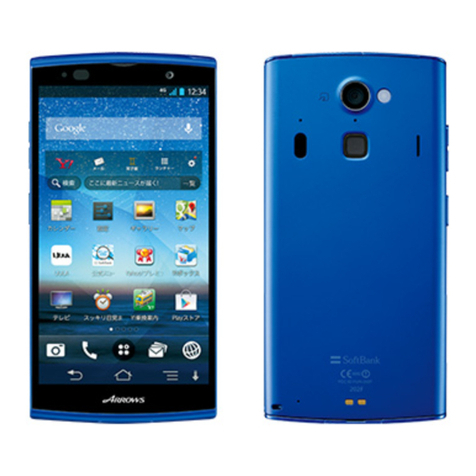
SoftBank
SoftBank 202F User manual
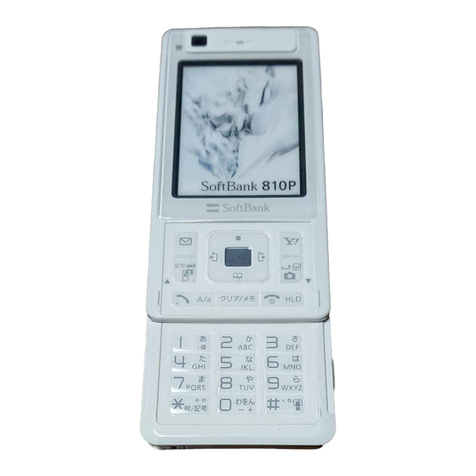
SoftBank
SoftBank 810P User manual

SoftBank
SoftBank Smartphone User manual

SoftBank
SoftBank 841SH User manual
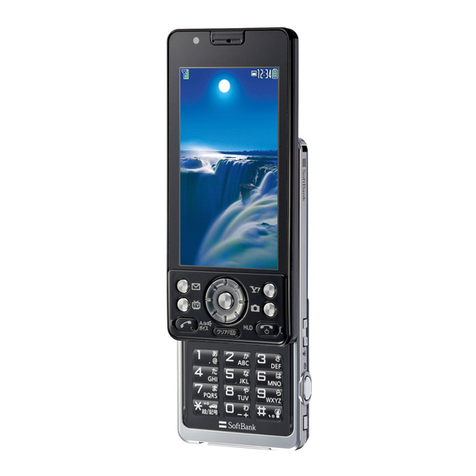
SoftBank
SoftBank 001P User manual
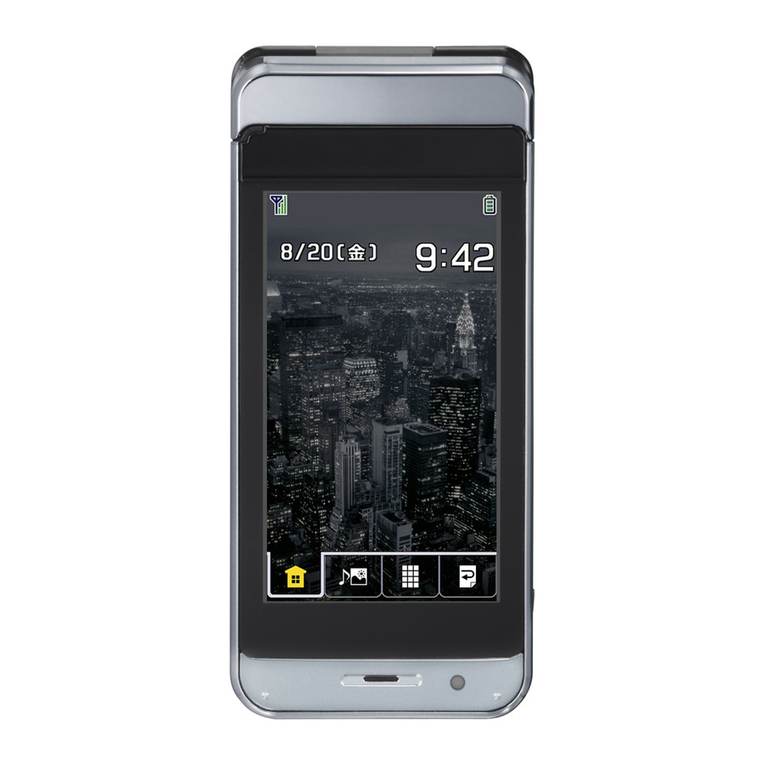
SoftBank
SoftBank 942P User manual

SoftBank
SoftBank 821SC User manual
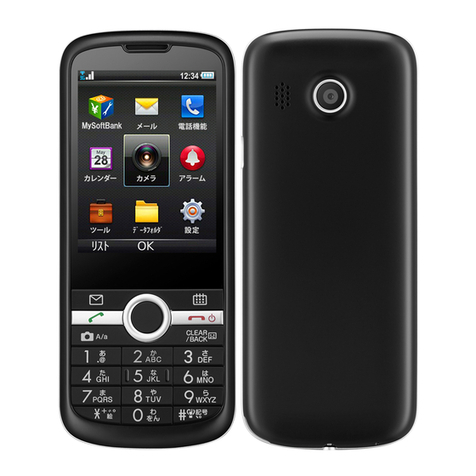
SoftBank
SoftBank 301Z User manual

SoftBank
SoftBank 944SH User manual

SoftBank
SoftBank 816SH User manual
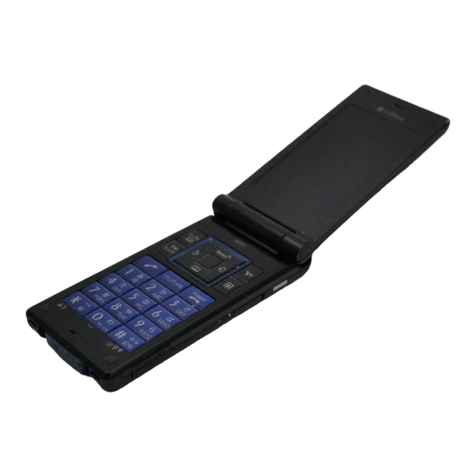
SoftBank
SoftBank 823T User manual
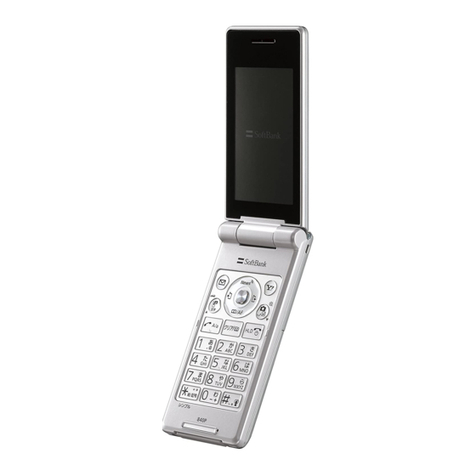
SoftBank
SoftBank 840P User manual
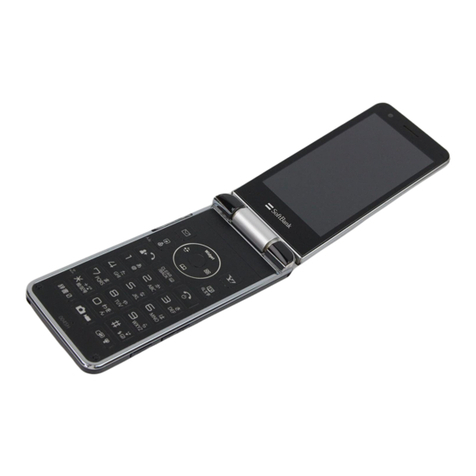
SoftBank
SoftBank 004SH User manual

SoftBank
SoftBank 940SC User manual
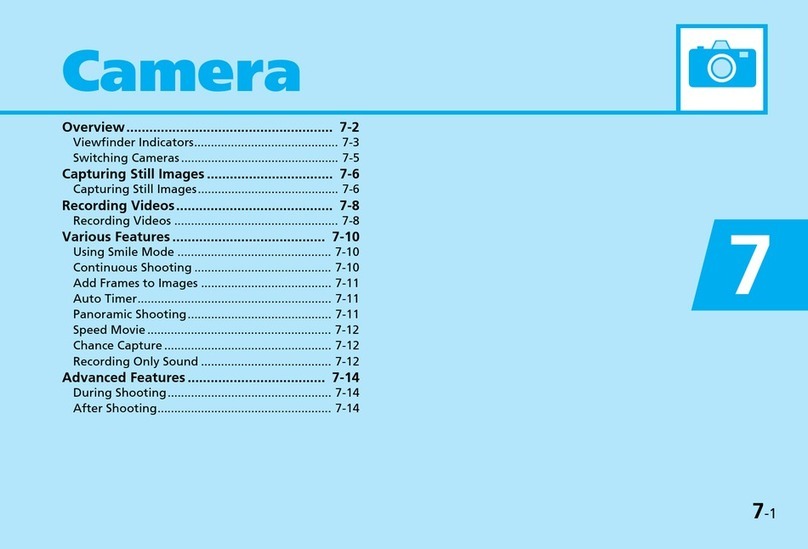
SoftBank
SoftBank 930N User manual

SoftBank
SoftBank 003Z User guide
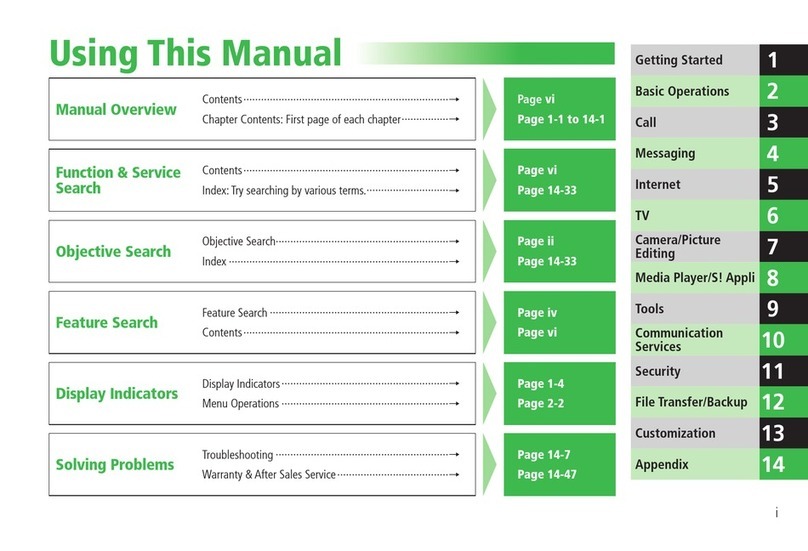
SoftBank
SoftBank 830T User manual
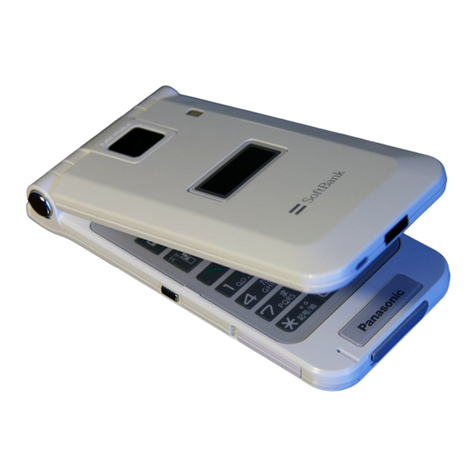
SoftBank
SoftBank 705P User manual

SoftBank
SoftBank 206SH User manual

SoftBank
SoftBank 730 SC User manual
